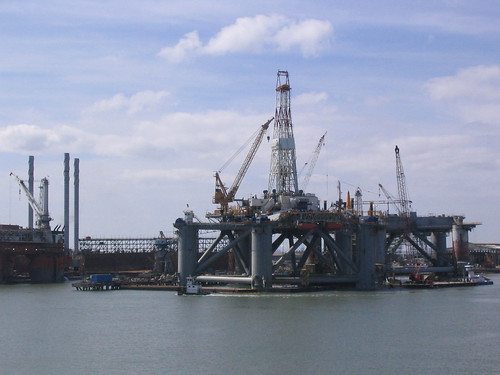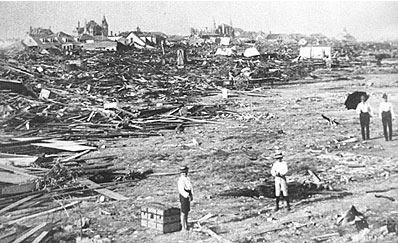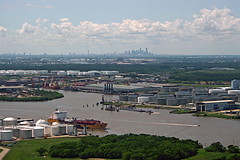Houston Is Weird: David Adickes's Giant Presidents
Then we coasted down a dead-end street and through an open chain-link gate, and saw this:
 Left to right: Martin Van Buren, Barack Obama, George Bush Sr., Lyndon B. Johnson, and others (back in 2004, of course, the bust of Barack Obama hadn't been made yet).
Left to right: Martin Van Buren, Barack Obama, George Bush Sr., Lyndon B. Johnson, and others (back in 2004, of course, the bust of Barack Obama hadn't been made yet).A field of gigantic presidents' heads looming in the hazy yellow light of the city, with a distant thunderstorm approaching over the city's suburban prairies: that was an experience I won't soon forget. I moved to Houston a few months later.
 Lincoln, Jackson, and Theodore Roosevelt.
Lincoln, Jackson, and Theodore Roosevelt.You know the "Keep Austin Weird" bumper stickers? Like saving the whales or supporting our troops, it's a halfhearted expression of nostalgia for a condition that's long been on the wane. Houston doesn't need that kind of bumper sticker, because Houston just is weird – though not in the cute ways that people romanticize. There are inflatable gorillas on top of freeway car dealerships, and ubiquitous faux-Mediterranean parking garage/condo buildings, and the flying cockroaches.
Because Houston is so sprawling, it has plenty of room for relatively ordinary people to do weird things on a grand scale, and that's exactly what David Adickes does. He's probably best known for his 70-foot statue of Sam Houston, looming over Interstate 45 about 60 miles north of the city.
Adickes makes cheap concrete sculptures on a monumental scale. His art is quintessentially Houstonian: campy, favoring quantity over quality, and scaled to a freeway audience driving 70 miles per hour. He's purchased additional real estate along I-10, possibly the city's busiest freeway, to become a roadside permanent collection for his sculptures, including a 30-foot tall representation of the Beatles and a huge "We Love Houston" sign.
In a 2004 newspaper article, he said, "the endless road through Houston is filled with a lot of junk on both ends. This will offer a little relief." Or at least some slightly different junk for people to look at.
Until that roadside attraction opens, the sculptures are in storage in a big fenced yard next to Adickes's studio. Personally, I think it's a much cooler place to see them – away from the freeway, you can enjoy them at a leisurely 2 miles per hour, and finding them feels like a discovery. It feels like wandering through a Titan grandmother's knick-knack drawer.
Visiting the presidents' heads make for a good bike ride. They're just a couple of blocks south of the very pleasant Heights Bike Trail, which extends northwest from downtown into the heart of the Heights neighborhood. As you're heading west from downtown, the bike path crosses White Oak Bayou, goes under the freeway, and enters a residential neighborhood. From there, you can take one of the side streets to your left to Summer St., then follow Summer to the end, It's about 2 miles from downtown, an easy 10 minute bike ride. You'll know the place when you find it. I mean, look, the heads are even visible from space:
View Larger Map














